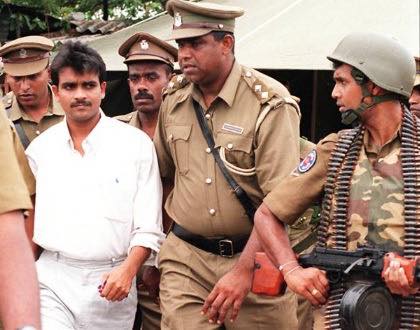Image: Lance Corporal Somaratne Rajapaksa (1999).
Lance Corporal Somaratne Rajapaksa, convicted as the main accused in the Krishanthi Coomaraswamy murder case, has written to President Anura Kumara Dissanayake expressing his willingness to testify in any future international investigation into the Jaffna Chemmani mass grave.
In the letter, his wife asserts that Rajapaksa’s only involvement was burying the bodies of Krishanthi Coomaraswamy and her family, allegedly murdered at the 7th Battalion Army Headquarters and transported to the Chemmani checkpoint on the orders of Captain Lalith Hewage.
The letter criticizes previous governments for shielding high-ranking officers while punishing low-level soldiers, claiming that accountability presented to the international community was selective and misleading.
Rajapaksa, who was sentenced to death by the Supreme Court in 1998, has also sent copies of his testimony to Prime Minister Harini Amarasooriya and Justice Minister Harshana Nanayakkara, along with a formal request for a new independent inquiry. A separate letter will be sent to the United Nations Human Rights Council within the week.
In the submitted statement, Rajapaksa’s wife claims:
- Rajapaksa joined the Sri Lankan Army in 1990 and was arrested in 1996 while serving with the 7th Battalion in Jaffna.
- He was convicted following a special trial before a three-judge bench and has been imprisoned for 29 years.
- He denies involvement in the rape and murder of Krishanthi Coomaraswamy and her family, stating his role was limited to burying bodies at Chemmani under direct orders.
- Bodies were transported from the 7th Battalion Headquarters to the Chemmani checkpoint after victims allegedly died under torture. These events reportedly occurred for nearly a year.
- Security duties at the Chemmani checkpoint included six soldiers: Rajapaksa and five others. Suspects identified by LTTE members were taken from the checkpoint to the army headquarters daily, often by truck after 4:00 p.m., and returned deceased.
- The only evidence cited against Rajapaksa was his identification of the burial sites. All five convicted men reportedly admitted only to carrying out burial orders.
(c)SLB
(With the inputs from Veerakesari newspaper.)
